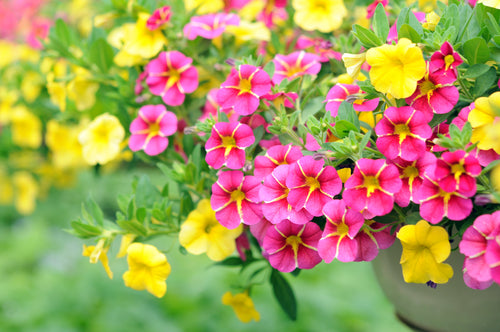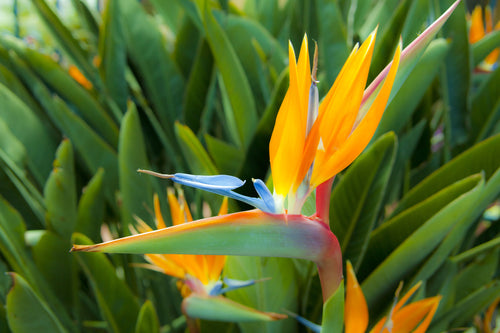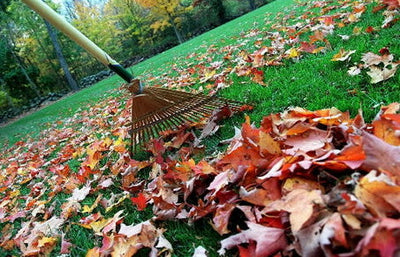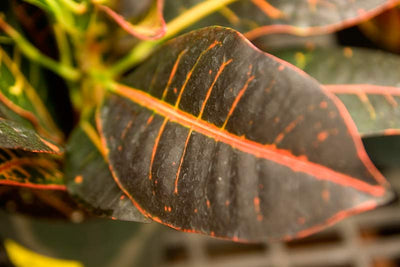For an Abundant Harvest Next Year
This year was a pretty good year for the vegetable gardens, however Fall is the time to give back and tune-up your soil for what you received in produce. There is still plenty of time for garden cleanup and amending. The soil amendments you add now will have all winter to break down before next Spring’s planting. Vegetables take nutrients from the soil as they grow. Each year you need to replace those nutrients to insure a healthy harvest. It all begins and ends with the soil. The healthier the soil, the better your vegetables will grow and the fewer problems you'll have. To improve your soil, you will need to check the pH (and adjust if needed), add soil amendments, and planting cover crops.
- CLEAN-UP: First, do a complete clean up, dispose of left over plant materials especially if they had disease or insect problems.
- SOIL TEST: Next, take and few soil samples and test your soil to see if any nutrients are significantly lacking. For a simple evaluation, Pesche’s carries the Rapitest Soil Test Kit (pH. N, P, K). For a more complete analysis, you can have your soil tested by a professional soil testing laboratory. The Cook County Farm Bureau has a soil testing program for area gardeners (www.cookcfb.org) as well as other labs listed at www.extension.illinois.edu/soiltest. Once you have your results, you may need to adjust the soil pH. Most vegetables grow best in soils that are slightly acid, falling between the 6.0 and 7.0 range. Add lime or Garden Gypsum to raise the pH and sulfur to lower it to within these levels. Fall is also a good time to apply organic fertilizers, such as rock phosphate and greensand, based on your soil test. These fertilizers break down slowly over time, so by spring the nutrients should be available for plant growth.
- ORGANIC MATTER: Another amendment critical to soil health is organic matter. A favorite fall organic compost is Back to Nature’s Natures Blend. Besides its role in aeration, moisture retention and temperature regulation, the organic content of the soil acts as a home and food source for beneficial soil organisms that convert nutrients to a form plants can use, provide aeration through their tunneling and facilitate the transferable of nutrients from the soil to the plant. Still other organisms help to maintain a balance between harmful and beneficial forces in the soil. The single most beneficial thing that can be done to restore soil fertility is to return organic matter to the soil, preferably in the form of compost. There are a number of commercial composts on the market. Pesche’s Garden Center recommends Back to Nature’s Natures Blend compost products. Back to Nature products are certified by the U.S. Composting Council. Cotton gin trash has been used as a soil conditioner in the Southern U.S. for over 150 years. Cotton is a heavy feeder, the ‘burr’ or ‘boil’; a fleshy husk (sepal) that surrounds the cotton fiber contains a significant amount of plant essential nutrients. When properly composted, cotton burrs are prized for their ability to break up clay, won’t cause nitrogen tie-up like wood and wood by-products and hold as much peat moss. Recent studies have shown that the greatest asset of cotton burr compost may be its value as a food source for beneficial soil organisms, whose population levels soar rapidly with its use. Nature’s Blend with Alfalfa and Humate is a balanced blend of composted cotton burrs, composted cattle manure, alfalfa and humate. Alfalfa is high in nitrogen and contains Triacantanol, a natural growth enhancer, and may help in the suppression and control of certain fungal diseases. Humate activates beneficial soil organisms and is an important source of humic acid and micronutrients. Work Nature’s Blend into the top 4 inches of soil by lightly turning the soil with a fork spade to mix the amendments. Overdress your garden with leaves for additional organic content. The leaves will break down slowly over the winter and at spring can be tilled in. Again only use leaves from healthy trees. Here’s a trick to reduce large amounts of leaves: Fill up a garbage can and work a weed whacker up and down in the can (make sure to wear a dust mask and safety glasses).
- COVER CROPS: Another way to add organic matter to the soil and prevent erosion is to grow cover crops which grow during the warm days of fall and early spring. Pesche’s carries Soil Builder Peas/Oats, Crimson Clover; and Crimson Buckwheat seeds by Botanical Interests. In Zone 5, plant cover crops during late September to early October. Lightly cover the seed with soil, and water well. Cover crops will grow until early spring, then till it under. The cover crop will break down and add vital nutrients and organic matter to your soil.
- After tilling, apply either or a combination of Dr. Earth Organic Compost or Bumper Crop Soil Builder. At planting time, remember to add Dr. Earth Tomato, Vegetable and Herb Fertilizer and be ready for awesome results! Any questions on how much compost to use just simply measure your growing areas and stop in.
Any questions on how much compost to use just simply measure your growing areas and stop in. Let us know how your gardens did, any problems you had. We’ll help you create a bountiful organic garden. This was a great year for veggie production; we’re all looking forward to 2018 to be even better!
www.extension.illinois.edu/soiltest









